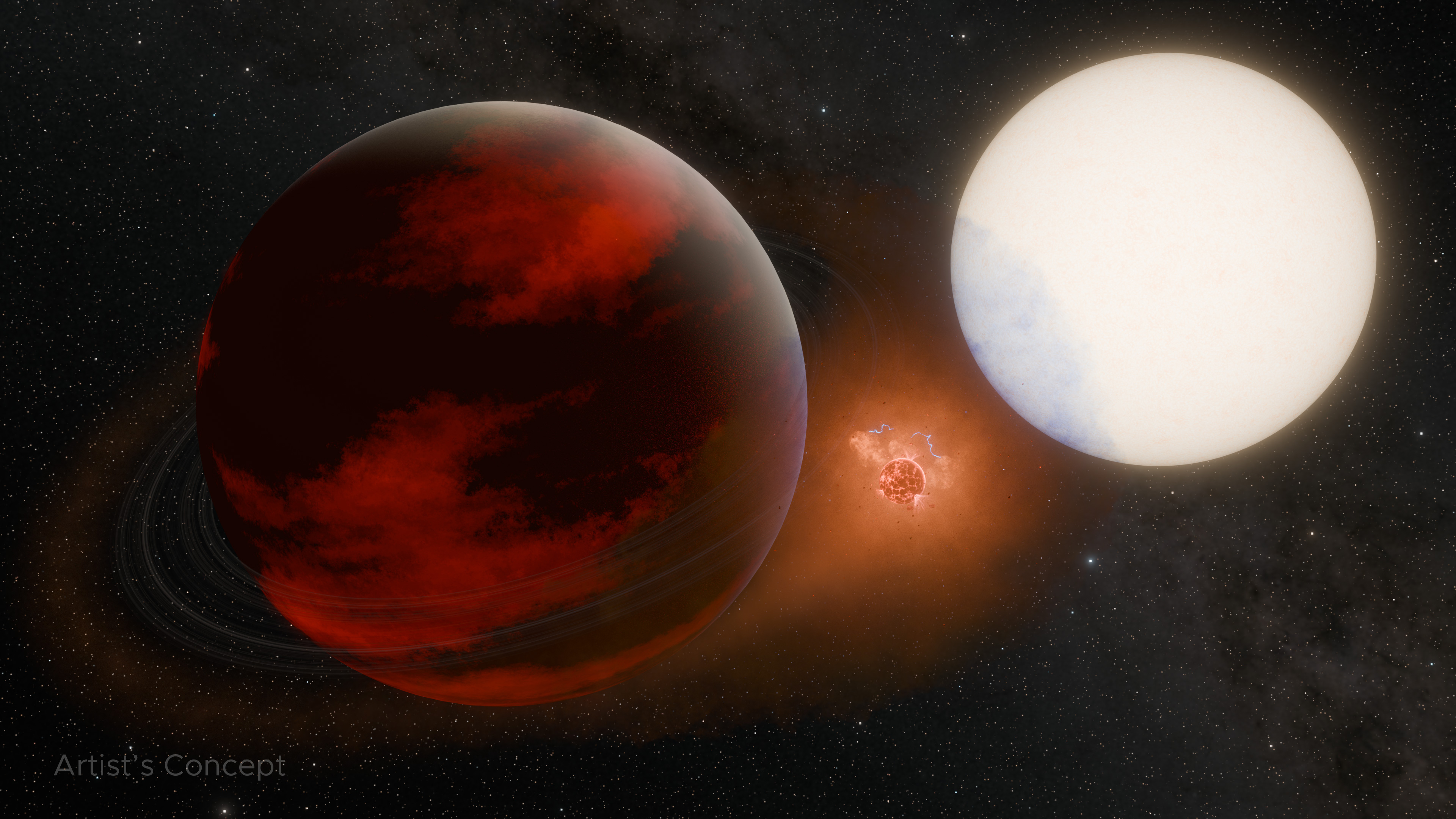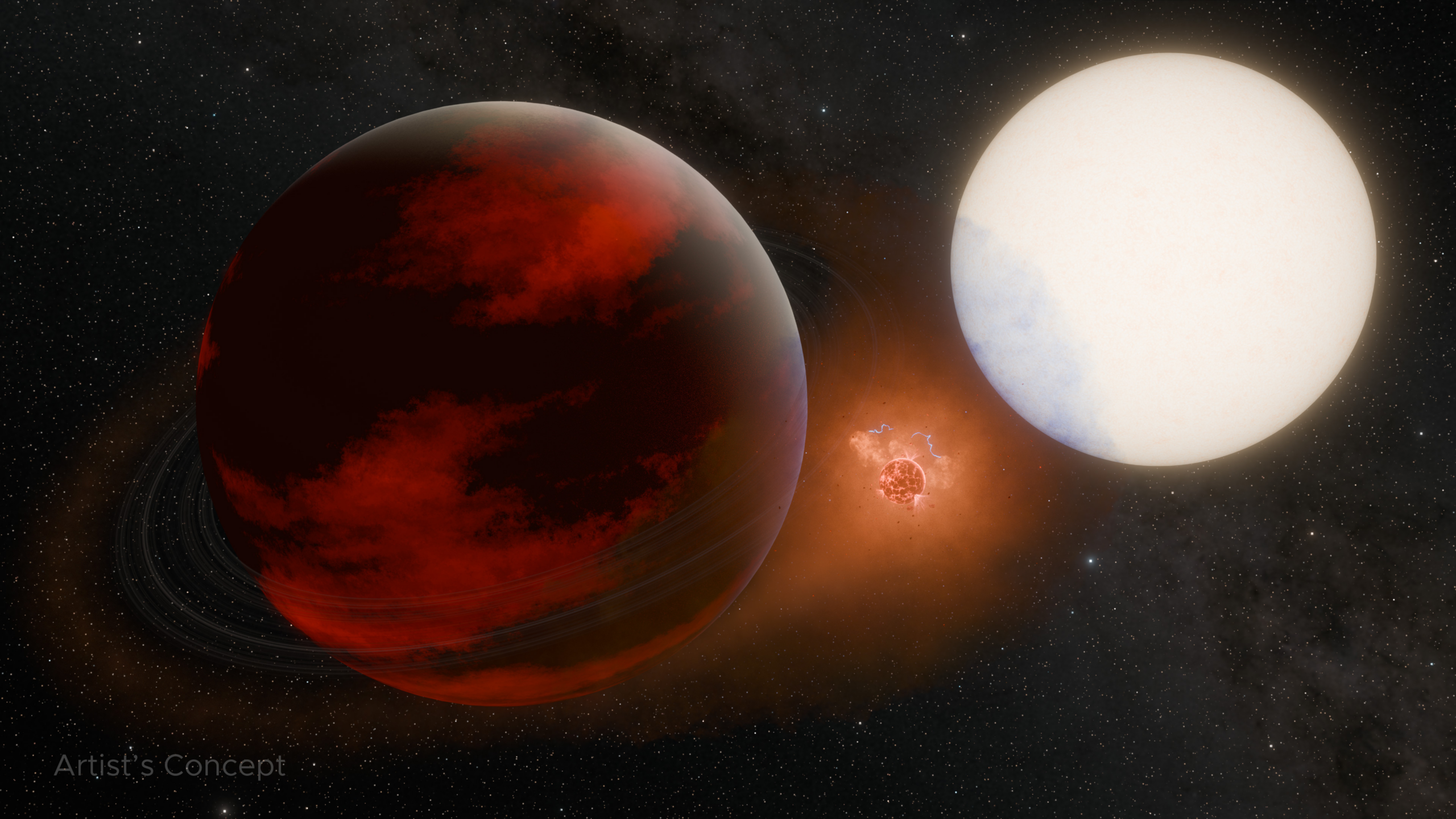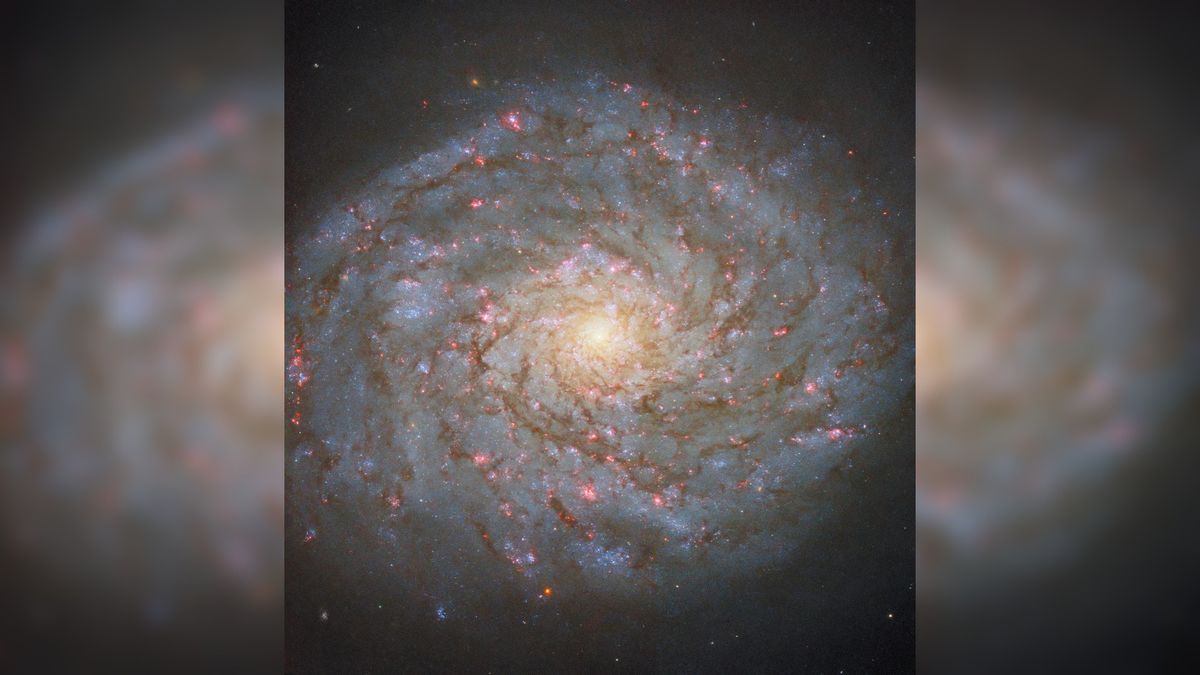Scientists have found new evidence of a potentially volcanic moon orbiting a planet beyond our solar system.
Our solar system contains the most volcanic object in the known universe: the Jupiter moon Io. Now, researchers from NASA’s Jet Propulsion Laboratory (JPL) in Southern California suggest a similar object may orbit a Saturn-size gas giant exoplanet named WASP-49 b, located 635 light-years from Earth.
A sodium cloud detected in the vicinity of WASP-49 b hints at the presence of a natural satellite, also known as an exomoon. While earlier studies have identified multiple exomoon candidates — including one potentially orbiting WASP-49 b — the existence of an exomoon has yet to be confirmed. Signs of volcanic activity may be the key to unveiling such objects that are otherwise too small and dim to see using modern telescopes, according to a statement from NASA.

“For example, Io, the most volcanic body in our solar system, constantly spews sulfur dioxide, sodium, potassium and other gasses that can form vast clouds around Jupiter up to 1,000 times the giant planet’s radius,” NASA officials said in the statement. “It’s possible that astronomers looking at another star system could detect a gas cloud like Io’s even if the moon itself were too small to see.”
Related: That’s no moon! Scientists doubt proposed detection of the 1st exomoons
In fact, using the European Southern Observatory’s Very Large Telescope in Chile, the researchers found that the cloud around WASP-49 b is located high above the planet’s atmosphere, much like the cloud of gas that Io produces around Jupiter.
Additionally, the cloud’s high sodium content and sudden changes in size further indicate it is a separate body orbiting the planet. Both WASP-49 b and its star are composed mostly of hydrogen and helium, with only trace amounts of sodium. Meanwhile, the cloud appears to be coming from a source that is producing roughly 220,000 pounds (100,000 kilograms) of sodium per second, according to the statement.
On two separate occasions, researchers also observed sudden increases in the size of the cloud when it was not next to the planet, meaning it is being refueled by another source. The cloud also appears to move faster than the planet, further suggesting it is generated by another body — possibly an exomoon — moving independently and faster than WASP-49 b.
“We think this is a really critical piece of evidence,” Apurva Oza, lead author of the study and a staff scientist at the California Institute of Technology, which manages JPL, said in the statement. “The cloud is moving in the opposite direction that physics tells us it should be going if it were part of the planet’s atmosphere.”
Another piece of evidence suggesting the cloud is independent of WASP-49 b is that it does not align with the planet’s 2.8-Earth-day orbital cycle. Using computer models, the researchers show that the presence of an exomoon with an eight-hour orbit around the planet could explain the cloud’s irregularities.
However, further study is needed to confirm the cloud’s behavior. This will require longer observations to identify patterns in the cloud’s orbit and structure, the researchers said.
“The evidence is very compelling that something other than the planet and star are producing this cloud,” Rosaly Lopes, co-author of the study and a planetary geologist at JPL, said in the statement. “Detecting an exomoon would be quite extraordinary, and because of Io, we know that a volcanic exomoon is possible.”
Their findings were published Sept. 30 in the Astrophysical Journal Letters.



